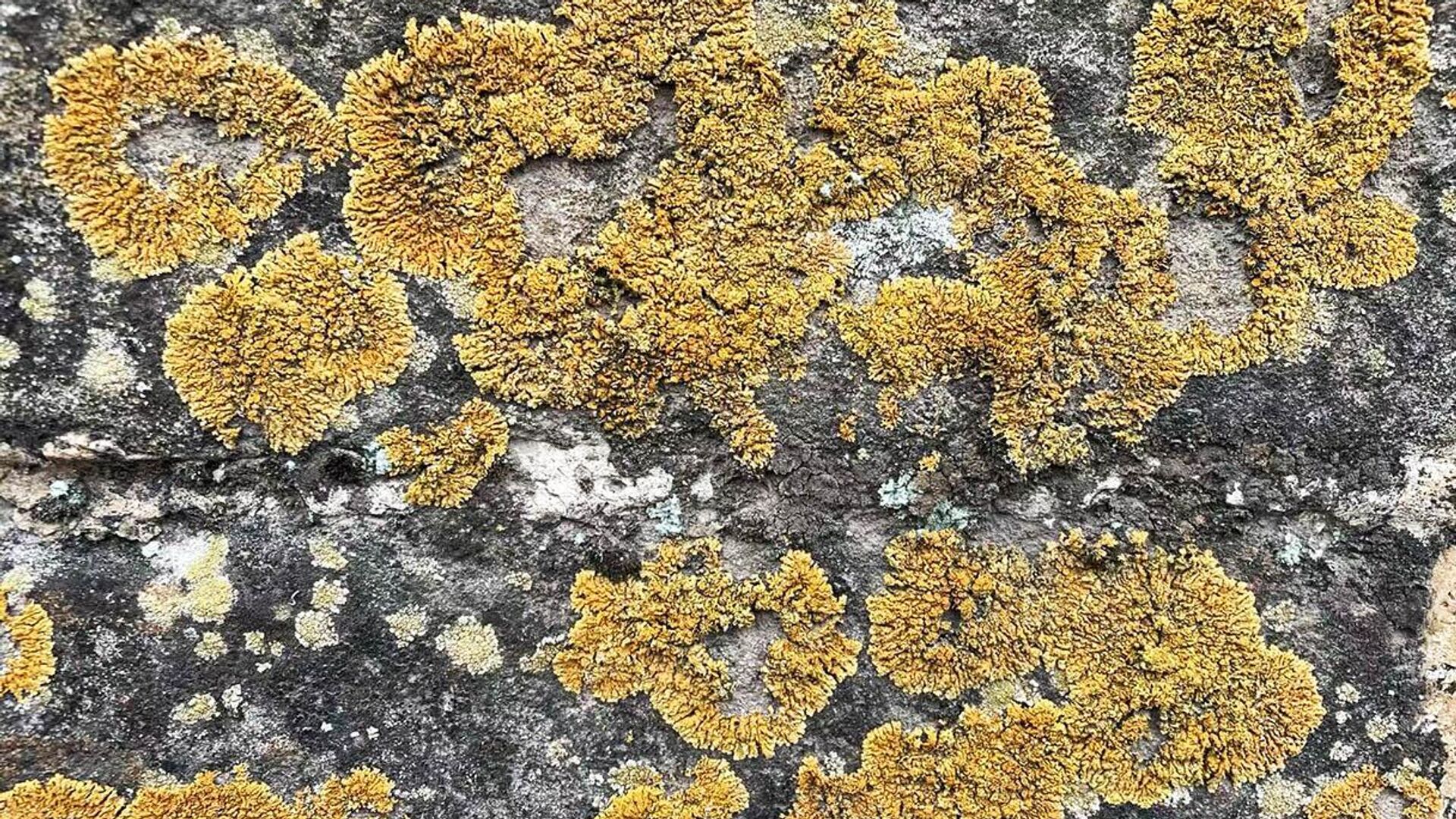https://sputnikglobe.com/20231209/weird-biomass-protects-chinas-great-wall-from-ravages-of-time--research--1115497439.html
Weird Biomass Protects China's Great Wall from Ravages of Time – Research
Weird Biomass Protects China's Great Wall from Ravages of Time – Research
Sputnik International
A recent breakthrough is altering established beliefs in historical conservation. Commonly, the growth of plants on old structures is considered detrimental. But biocrusts are unique due to their non-invasive root systems, making them more compatible with preservation activities.
2023-12-09T12:54+0000
2023-12-09T12:54+0000
2023-12-09T12:54+0000
beyond politics
science & tech
earth
china
society
great wall of china
https://cdn1.img.sputnikglobe.com/img/07e7/0c/09/1115497277_0:61:1216:745_1920x0_80_0_0_313073070e56779b22bf0f656e208e1f.jpg
The iconic Great Wall of China, a symbol of Chinese civilization for over two millennia, has an unexpected protector in the form of biocrusts, new research has found. These "living skins," composed of bacteria, moss, lichen, and other organisms form a protective layer on soil surfaces, crucial in safeguarding parts of the Wall against environmental damage.A recent study published in Science Advances underscores how biocrusts defend the wall from elements like wind and rain, potentially slowing its deterioration. Their impact is especially significant on sections built from compacted soil vulnerable to erosion. Biocrusts, covering about 12 percent of the Earth's land surface, are predominantly found in drier climates like northern China.Soil scientist Bo Xiao and his team from China Agricultural University conducted a comprehensive study on the Great Wall. They found that biocrusts — primarily moss and cyanobacteria — covered over two-thirds of the studied sections. The team compared the physical properties of biocrust-covered parts with those of bare, erosion-prone, compressed earth areas. The research team found that the sections blanketed by biocrusts created a stabilizing layer, reducing porosity and boosting strength, thereby enhancing the durability of the cultural heritage site.This discovery is reshaping traditional views in heritage conservation. Typically, plant growth on historical structures is seen as harmful, but biocrusts are an exception. Their lack of invasive roots makes them less damaging and more helpful in preservation efforts. However, these biocrusts face threats from climate change and land use changes, which could reduce their protective abilities.Scientists are now investigating ways to cultivate biocrusts, leveraging these findings to preserve the Great Wall and possibly other cultural heritage sites. Though still in its early stages, the research highlights the importance and potential impact of protecting the Great Wall, a testament to Chinese heritage.
https://sputnikglobe.com/20181022/woman-great-wall-fall-1069110579.html
https://sputnikglobe.com/20190222/saudi-crown-prince-great-wall-china-1072655306.html
earth
china
Sputnik International
feedback@sputniknews.com
+74956456601
MIA „Rossiya Segodnya“
2023
Chimauchem Nwosu
https://cdn1.img.sputnikglobe.com/img/07e7/09/01/1113046371_0:99:1536:1635_100x100_80_0_0_9c5c627283eca931c39fe4852bbb301c.jpg
Chimauchem Nwosu
https://cdn1.img.sputnikglobe.com/img/07e7/09/01/1113046371_0:99:1536:1635_100x100_80_0_0_9c5c627283eca931c39fe4852bbb301c.jpg
News
en_EN
Sputnik International
feedback@sputniknews.com
+74956456601
MIA „Rossiya Segodnya“
Sputnik International
feedback@sputniknews.com
+74956456601
MIA „Rossiya Segodnya“
Chimauchem Nwosu
https://cdn1.img.sputnikglobe.com/img/07e7/09/01/1113046371_0:99:1536:1635_100x100_80_0_0_9c5c627283eca931c39fe4852bbb301c.jpg
great wall of china, biocrusts, preservation, heritage conservation, soil scientist, bo xiao, china agricultural university, moss, cyanobacteria, rammed earth, erosion, environmental degradation, climate change, cultural heritage sites, research, science advances journal.
great wall of china, biocrusts, preservation, heritage conservation, soil scientist, bo xiao, china agricultural university, moss, cyanobacteria, rammed earth, erosion, environmental degradation, climate change, cultural heritage sites, research, science advances journal.
Weird Biomass Protects China's Great Wall from Ravages of Time – Research
A new breakthrough is changing established beliefs in historical building conservation. Although the growth of plants on old structures is usually considered harmful, the unique non-invasive root systems of 'biocrusts' make them more compatible with preservation activities.
The
iconic Great Wall of China, a symbol of Chinese civilization for over two millennia, has an unexpected protector in the form of
biocrusts, new research has found.
These "living skins," composed of bacteria, moss, lichen, and other organisms form a protective layer on soil surfaces, crucial in safeguarding parts of the Wall against environmental damage.
The Great Wall of China is an extensive series of defensive fortifications built to protect ancient Chinese states from invasions. Originating in the 7th century BC, it was expanded by several dynasties, most notably the Ming Dynasty. Stretching over 21,196 kilometers (13, 171 miles), it is a remarkable symbol of China's historical legacy and architectural ingenuity.
A recent study published in Science Advances underscores how biocrusts defend the wall from elements like wind and rain, potentially slowing its deterioration. Their impact is especially significant on sections built from compacted soil vulnerable to erosion.

22 October 2018, 16:13 GMT
Biocrusts, covering about 12 percent of the Earth's land surface, are predominantly found in drier climates like northern China.
Soil scientist Bo Xiao and his team from China Agricultural University conducted a comprehensive study
on the Great Wall. They found that biocrusts — primarily moss and cyanobacteria — covered over two-thirds of the studied sections. The team compared the physical properties of biocrust-covered parts with those of bare, erosion-prone, compressed earth areas.
The research team found that the sections blanketed by biocrusts created a stabilizing layer, reducing porosity and boosting strength, thereby enhancing the durability of the cultural heritage site.
This discovery is reshaping traditional views in heritage conservation. Typically, plant growth on historical structures is seen as harmful, but biocrusts are an exception. Their lack of invasive roots makes them less damaging and more helpful in preservation efforts.
However, these biocrusts face threats from climate change and land use changes, which could reduce their protective abilities.

22 February 2019, 12:15 GMT
Scientists are now investigating ways to cultivate biocrusts, leveraging these findings to preserve the Great Wall and possibly other cultural heritage sites.
Though still in its early stages, the research highlights the importance and potential impact of protecting the Great Wall, a testament to Chinese heritage.





